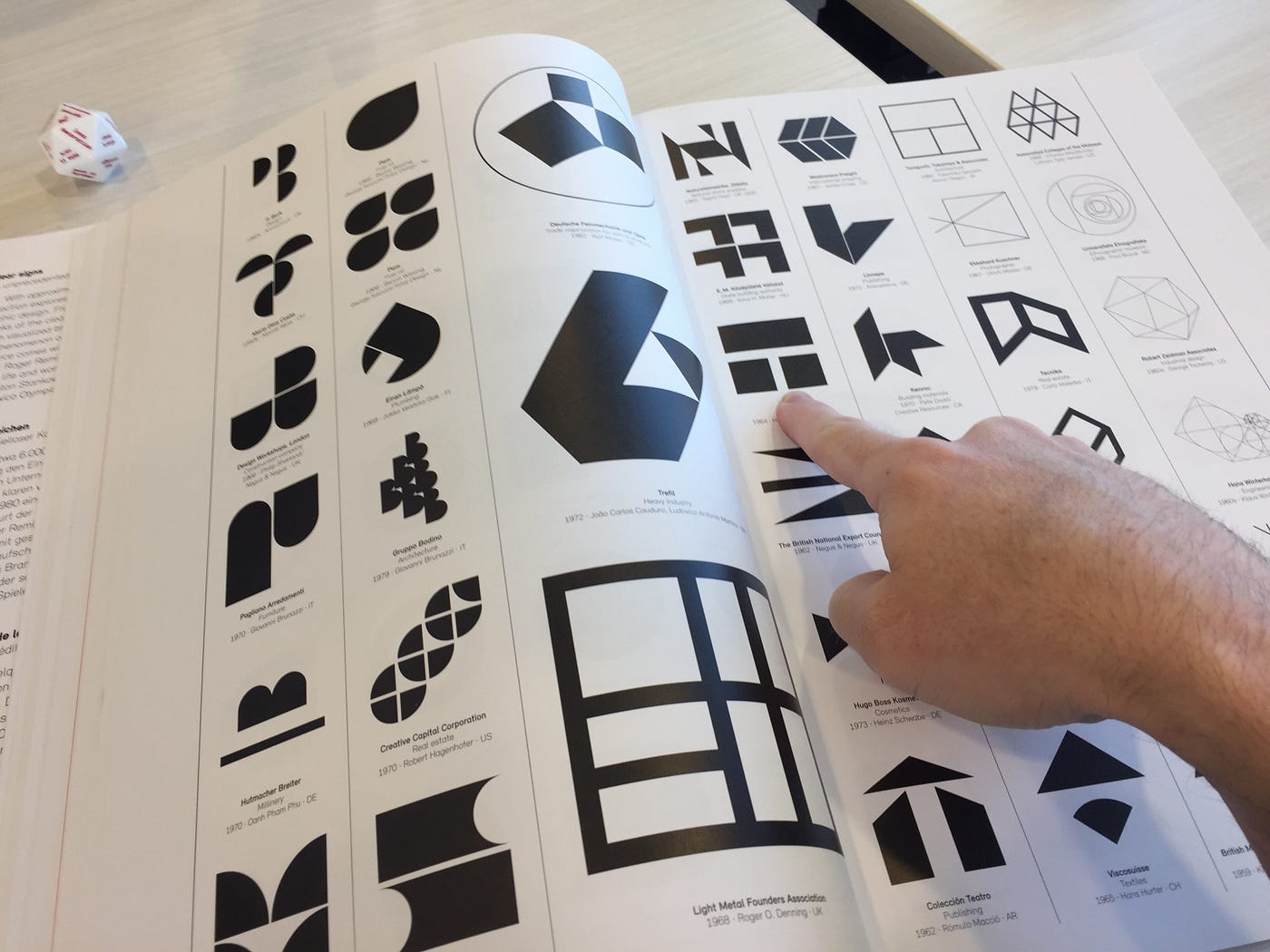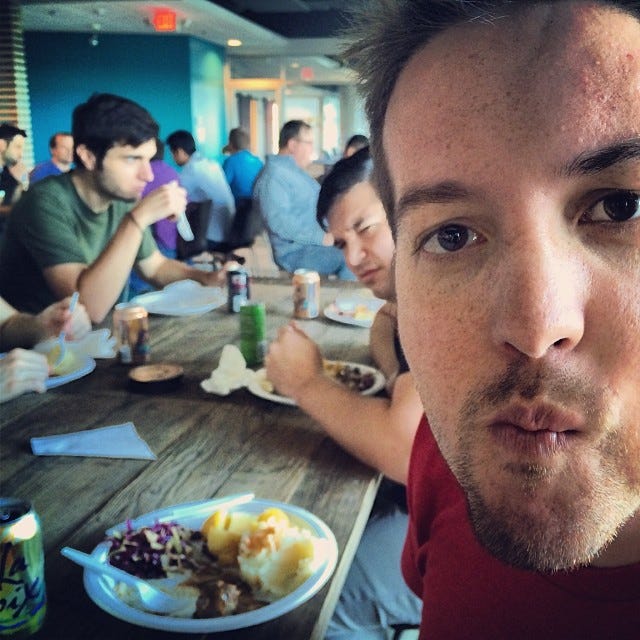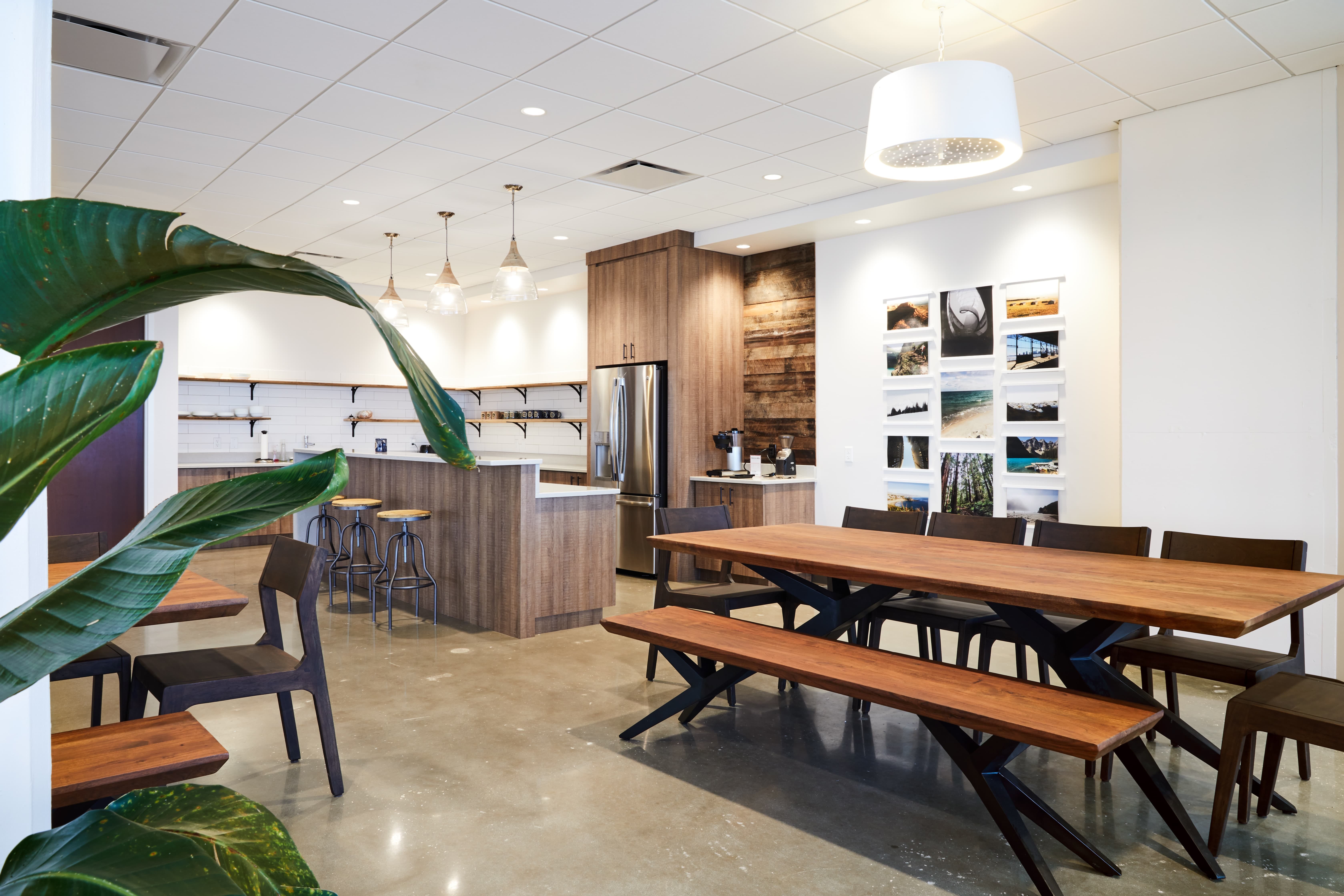Envy Labs’ 2017 rebrand

What’s a “brand?”
Michael Beirut, Principle at Pentagram, spelled it out a few years ago: graphic design criticism is a spectator sport. But I’d argue since that 2013 essay, it’s risen past mere “spectator sport” to the realm of casual dinner conversation. Today, it’s not unusual to overhear a coffee shop conversation with someone talking about their “personal” or “lifestyle” brand on Instagram. And it’s only becoming more embedded in our culture. For the most part, we’re all aware of it, and fine with it.
A brand often starts with a logo. This we all know. It doesn’t have to end there—a brand in its pure form is, after all, an eternal idea or movement—but slapping symbols on everything is a habit we can’t kick. No matter how lofty or eternal your vision is, society still needs that symbol or wordmark to legitimize it. Technology isn’t helping us break our addiction, either. Starting a business? You’d better have a logo. Starting a Facebook group? You need an avatar and header graphic! Made a website? Upload a logo and favicon to get started! Working at a company that still has an ’80s logo? Adapt or die! Rebrand, refresh. Rebrand, refresh.
We fell into this trap with our last Envy logo update from 2013, when we updated an over-stylized logo that dated us. We “refreshed our brand” to feel more relevant. It worked. But when it came time for us to “refresh” again, we didn’t want to do it out of pure habit. We didn’t want to neglect the one central reason you even call it a “brand.” And that’s meaning.

A brand consisting of a logo, and nothing more, is shallow and somewhat pointless.
When we create brands, we’re engaged in a process of “manufacturing” and “managing” meaning. … Sometimes I hear designers speaking in generalities such as, “We had to freshen the brand,” or, “We had to make it more dynamic,” and so forth. What I don’t hear designers say is, “We chose this brand, this particular meaning and that particular meaning, and we got rid of that meaning.” We can be much more particular — we must be much more particular — about the meanings that we think matter.
—Grant McCracken in Brand Thinking and Other Noble Pursuits
For most of Envy Labs’ history, we’ve been guilty of prioritizing our clients’ needs above our own. We’re not serial promoters; we neglect our “brand” almost by default. Enough time had passed since our last company orienteering, where we needed a reminder of what we stand for, and the big picture of what we’re accomplishing.
To rebrand is to revisit your values—the _raisons d’être—_organize them, and invite outsiders into what you’re setting out to accomplish. A brand is more than a mere company or a part of capitalism. A true brand is an idea or movement, something much grander and more important than money. It can take the form of a company, but it doesn’t have to. A brand is merely an idea that people can agree or disagree with.
We needed to rediscover our meaning.
Started from the bottom, now we’re…where, exactly?

The name Envy Labs came about in 2008 when Gregg Pollack started a full-time web agency with three other developers after his popular Rails Envy podcast/blogging venture with Jason Seifer. Rails Envy was a tongue-in-cheek reference to non-Rails developers’ being envious of Rails developers’ amazing experience building web software (which, in 2007, was mostly true based on what the rest of the landscape looked like).
Touching on that same vein, Gregg came up with the name Envy Labs because it sought to create the same culture that so many other agencies had achieved. Beautiful, downtown office spaces. Remote work. Unlimited vacation. Ridiculous benefits. Incredible company culture. Gregg wanted to start a company that took care of people well—one that others were envious of.
In a mere four-and-some-change short years, Envy Labs had grown, and now had a successful bootstrapped product on its hands: Code School. The combined number of employees were somewhere in the 40–50 range, and the company was able to provide some of the best salary, benefits, culture, and growth opportunities for a tech company in the state of Florida. It attracted some of the most passionate, driven, fun-loving individuals you could hope to find.
Everything was great. Magical, even.




But how far can “be better than the rest” take you? Where do you go from there once you’ve achieved the success you’re going for?
Rather than take some time out for self-reflection, we pushed on, continuing to focus on making our company culture bigger and better. Often to the neglect of what we were achieving beyond our four walls.
Where do we go from here?


In early 2017, the design team—
,The design team began by finding our brand positioning—our place in the (economic) universe. Where did we fit in? Did our name reflect that? Over the course of months, we explored evocative names that captured the spirit of what we were seeking after.

We needed to communicate several things:
- We liked solving impossible problems.
- We moved fast, and could outpace many larger agencies in building scalable web apps in a matter of weeks.
- We were small and nimble, able to spin up or down quickly, and able to fit into nearly any existing corporate structure.
For the better part of our exploration, we felt we had outgrown the word “Envy.” We felt that word stood for something that was no longer part of who we were, or where we wanted to go.
After all, how can you build a vision for the future based on what somebody else has?
We explored many potential names, trying each out over the course of weeks. In the office, we even pretended we had already changed our name. Some company names were rejected in less than a day. Other names we really liked, and would have probably changed our name to had we not discovered a few similar trademarks after coming up with the name.
A Return to Form
Months of crumpled paper, erased whiteboards, and -final-final-v3.ai Illustrator documents turned
up nothing but dead ends in the search for this new identity.
We were discouraged. After some soul-searching, we still couldn’t find the right words that captured who we needed to be. Unsure where to sail toward, we returned to our roots—that initial spark—that exploded into the vibrant culture and history we wanted to preserve.
But more than that: we couldn’t forge ahead marching to the beat of our own drum. We achieved success because we had solved others’ problems, and would continue to do so as long as the company existed. We didn’t exist without others. So, we took one step back in order to take two steps forward:

We returned to our old name—one with history, recognition, and a dash of fun. Us trying to get away from being “others-focused” (envy) only drew us right back in at the end.
Speaking to the pure design of it, our new lockup is a union of three shapes forming an abstract “e” that represent the developers, production team, and designers that make everything happen (can you guess which of the shapes represents the special snowflake designers?). Our typeface is a grotesque with notable geometric properties, evoking the forms and philosophies of mid-century modernism. We’re a modernist company, after all — we believe in the truth of forms, reduction of waste, and simplicity of execution. And of course, having “envy” in our name mandates we use some hue of green as a brand color; as designers we don’t waste any good metaphors that fall into our laps.
In terms of our brand it’s a mere symbol — a vehicle for a message. And that message is: we don’t exist without clients and their existing problems. We don’t exist without others. As soon as the world runs out of problems to solve, Envy Labs closes its doors (and that would be amazing!).
This might not be an independent identity—it can’t exist apart from other people. But for where Envy Labs is now, it’s perfect. And for the foreseeable future, we don’t want to imagine our purpose divorced from real-world problems.
Breaking out of our bubble
With this new identity, we aim to be deeply-rooted in culture. To take another page from
We pay dearly if we don’t respond to culture, and we pay dearly when we don’t respond to change.
A reason why we lost sight of our purpose, for a short time, was we were so enamored with ourselves. We had a good thing going. But the world doesn’t revolve around us, and Envy Labs doesn’t exist without real problems to solve. And we’re aiming to fix that by breaking out of our bubbles.
Along with this rebrand, we’ve also invested time inventorying what matters most to us. That’s a separate conversation entirely, but here’s a short list of things we care about deeply right now:
- Healthcare
- Education
- Orlando
- Open source software

We’re not content to let the world—and culture—pass us by, and we’re going to be spending a lot less time focusing on what we are / are not, and instead spend more time focusing on others, and how we can or can not help them. We’ll help the ones we can, and do the best to refer the ones we can’t to the right place.
Envy Labs’ brand and meaning is solving others’ problems.
So, how can we help you?